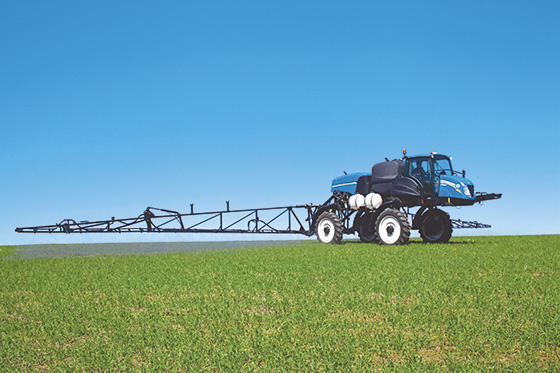Technologic field

In-board electronics is becoming more and more common in Brazilian agricultural equipment and places the country among the most advanced complexes of technology applied to agriculture
Technology has definitively arrived to Brazilian farming. Currently, features of precision agriculture are being more and more common in planting and harvesting, mainly in grain farming. This is one of the strongest areas of national agribusiness that is breaking records of productivity one after the other also due to the increasing use of these solutions.
A good example is Campos Gerais, in the state of Paraná—a pioneer region in agricultural mechanization—where the intensive use of technology is already a reality. One of the cradles of direct plantation in the seventies, the region—that has seen in the past the implementation of innovative techniques of soil conservation—passes currently by another deep renovation represented by the introduction of intelligent machines that improve grain quality, reduce losses and consequently increase business’ profits.
For example, an increase of 11 percent in soy culture is expected for the crop of 2014-2015. This corresponds to 95.8 million tons picked. Since the last crop, productivity increased from 47.6 bags per hectare to 50.7 bags per hectare. This is partially due to the use of precision agriculture resources that allows the direct application of inputs in accordance with the necessities of each point of the harvest. “In fact, in-board electronics is being more and more common in this region. A taboo was broken, using larger and more sophisticated machines at each time”, comments Davi Lunardi, director of TratorNew, one of the main dealers of New Holland Agriculture in the country, covering 61 municipalities of the Southern region. “In this sense, Brazil is aligned with the state of the art of agricultural technology in the world. For example, productivity maps and automatic pilot started to be disseminated here.”
Recently, the manufacturer—controlled by Fiat group—has broken another barrier when it became the first brand to offer features such as GPS and automatic pilot to small farmers. Since March, the company offers these features in the TL 75 tractor with cabin, through the government program Mais Alimentos, for payment in up to ten years with interest rate of 2 percent and up to three years of grace.
Another innovative action was carried out at the beginning of this year when the brand celebrated a partnership with Cargill that allows the change of new machines by grains, becoming the first manufacturer to offer this type of credit in the national market. Such stimulus may obviously help farmers to implement these technologies and is an important leverage to make popular advanced electronic systems in Brazilian fields.
“FRIGHTENING”
And this already happens, for example, in the Barreiro Ranch, a family property of 220 bushels located in the municipality of Teixeira Soares (PR), approximately 150 km far from Curitiba. Directed by the brothers Emerson, Nereu and Luiz Alberto Serenato, the Ranch invested one million reais in machines along 2013, composing a fleet that includes a CR6080 harvester and tractors TL75, TS6020 andTM7040, in addition to one sprayer, all manufactured by New Holland Agriculture.
With these machines, the Serenato family produces soy, corn, beans and wheat and operates a poultry farm with more than 100,000 laying hens. Its main product, however, is soy, which is planted in 160 bushels and where 80 percent of the crop was already harvested with a productivity of 206 bags per bushel. This crop is the first that uses precision agriculture. “We are entering now in precision agriculture but all soil analyses were carried out with these machines”, says Nereu Serenato. “In the system we used before, if the correction of an area asked for 10 tons of limestone per bushel, for example, this was what we made. With precision agriculture, this will be frightening because you will lay the material only where the correction is really needed.”
Serenato Brothers do not even know how much they will save with these new resources, but they already have information of neighbors that are using this technology for some time. “In the winter, we will make corrections with the maps and will know the exact difference in productivity”, says Nereu. “But people that are in the business say that at the first time they bought the same quantity they were using and half of it was not used.”
Emerson Serenato thinks that—although the investment in machines is high—this effort is worthwhile. In fact, they are thinking to buy one more machine this year: a backhoe to be used in the poultry farm. “But at first we have to harvest everything, pay the bills and see how things will go”, warns him.

Av. Francisco Matarazzo, 404 Cj. 701/703 Água Branca - CEP 05001-000 São Paulo/SP
Telefone (11) 3662-4159
© Sobratema. A reprodução do conteúdo total ou parcial é autorizada, desde que citada a fonte. Política de privacidade














